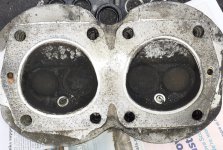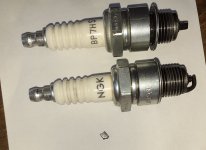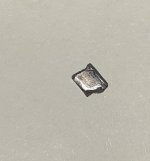It’s not always easy to see from photos, whilst it could well be foreign object damage, it could also be a particularly nasty case of pre-ignition or detonation.
The head look perfectly salvageable to me, I would want to pull the valves and inspect them and the valve seats. If it is FOD then whatever went through it needs to have got in and out of the cylinders via the valves.
I would remove the barrels and pistons and inspect both. Personally I would replace both pistons unless you’re on a really tight budget. Check the barrels for signs of scoring or metal transfer. If it is FOD then whatever bits have been going round inside the engine may well have scored the bores. If pre-ignition has raised cylinder temps high enough to melt the top of the piston, you might find aluminium smeared up the side of the bore. This should come off with some wd40 and scotchbrite or very fine wire wool.
From there I would inspect the big end bearings, either scenario would shock load them quite heavily, especially the upper bearing shell. Hopefully they are fine but doesn’t hurt to look.
Then I would carefully inspect the oil pan and filter for signs of debris, and do a full deep clean off the whole engine including all the oil Galliers if you find any. That piece of piston (not to mention the potential object) had to go somewhere. When a friend of mine had detonation damage on his engine, the melted bits of aluminium from the piston got everywhere, and I mean everywhere, inside the engine.
Finally, don’t forget to solve the root cause of the problem when you put the now repaired engine back together. If it’s a foreign object, then how did it get in? Presuming you’re running an air filter (and to avoid this kind of damage is why we do!) then carefully inspect the full intake track looking for any more debris and try to see how something could get in past the filter, is it seated correctly? Or torn?
If you decided it might be pre-ignition or detonation then you need to carefully check that the timing isn’t over advanced, that the carb isn’t running lean and that there is not other reason for the engine to get hot, such as a damaged cooling fan or stuck thermostat.
Lots to think about! As I wrote in my own recent engine autopsy post, it’s always interesting trying to follow the logical train of events that lead to the failure, but not fun when it’s your own engine/money that is sitting there looking worse for wear! Hope you can get it sorted soon and get back out on the road






